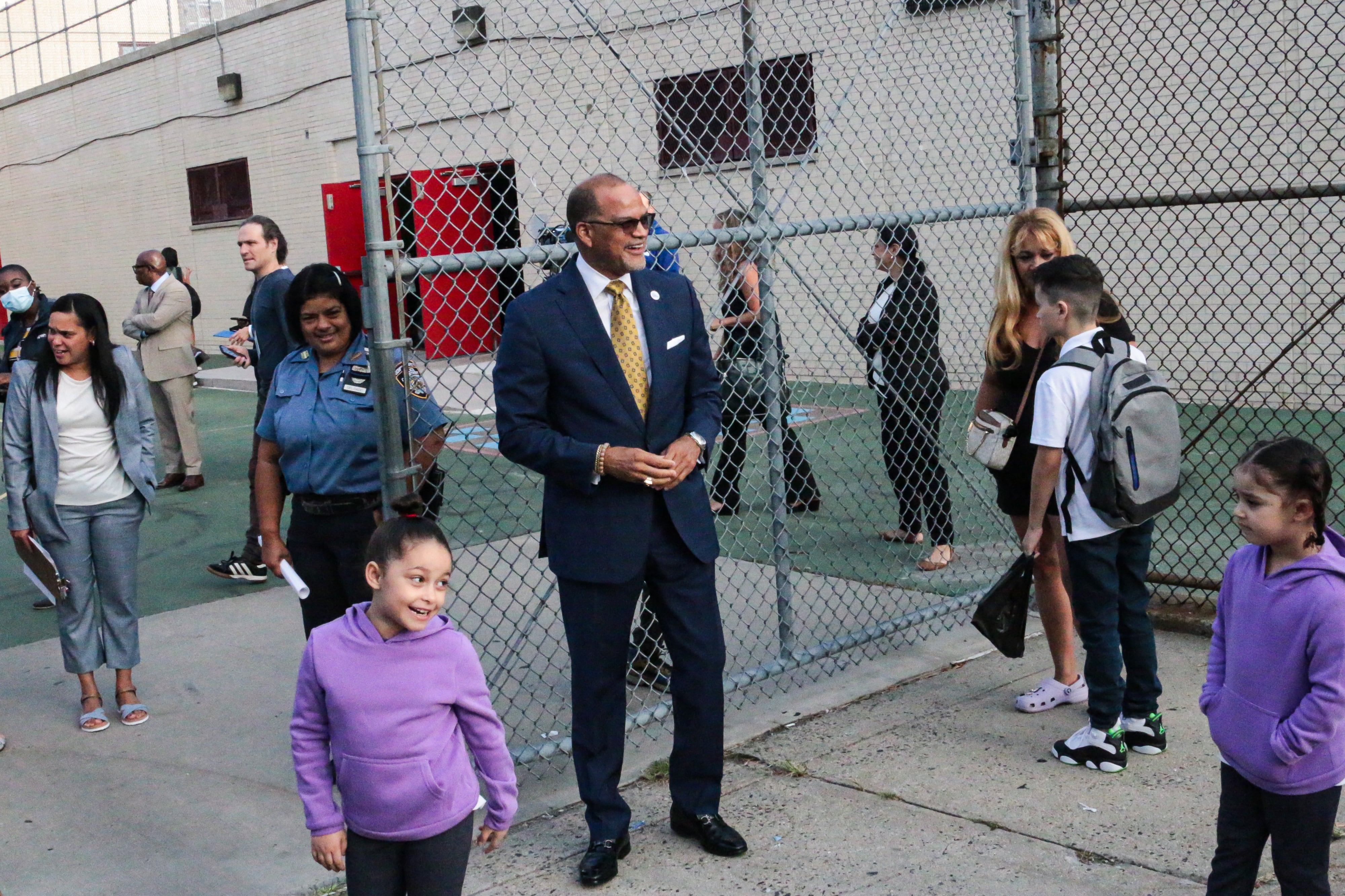New York City schools won’t have to brace for budget cuts next school year — at least at first.
All schools will receive the same amount of money or more at the start of the 2023-24 academic year as they did this year despite some of the “fiscal challenges” facing the city, Chancellor David Banks announced on Monday during a City Council hearing about the education department’s proposed budget for next fiscal year.
But school budgets may not need the extra cushion this year. Unlike the significant drops over the past few years, the education department is projecting enrollment to largely hold steady next year, dipping by less than 1%
The move represents a shift from what happened last summer, when budget cuts tied to declining enrollment, sparked severe backlash, including a lawsuit, and forced schools to shrink staff and programming.
It also comes as Mayor Eric Adams has proposed cutting the education department’s budget by 3% next fiscal year, which begins July 1. That $30.5 billion budget is expected to include less spending on fringe benefits and cut a previously announced expansion of preschool for 3-year-olds.
The decision to start the new school year with steady budgets, however, doesn’t mean schools are completely immune from cuts. Banks said the city hasn’t yet decided whether schools will see cuts during what’s known as the “mid-year adjustment”— a practice put on pause this year using $200 million in federal COVID relief dollars.
Schools get money in the summer based on the city’s enrollment projections, and when the final tallies are taken on Oct. 31, schools could lose money mid-year if they’ve enrolled fewer students than projected — or get extra money if they have more children.
“If a school has 500 students, but by the middle of the year, they’ve dropped down to 200 students, we’re not going to make the commitment today to say, ‘No matter what, there’ll be no adjustment even at that point,’” Banks said during the hearing.
That might leave some school leaders with tough decisions. While principals might get the same amount of money as last year, they may be hesitant to hire more teachers or create more programming in anticipation of losing money during the school year.
One the one hand, some city principals said they understand the city’s desire to bring funding more in line with enrollment to avoid big disparities in per-student spending between schools.
“There are schools that are serving many fewer students than they were five years ago, and the city can’t afford to just fund those schools endlessly,” said a Brooklyn principal who spoke on condition of anonymity for fear of reprisal.
But on the other hand, the principal wishes that the education department would make it easier for schools to plan by promising budgets will not be cut more than a certain percentage in a given year rather than having to make educated guesses.
And even if a school does not have to return money later in the year, it can be difficult to use before the spending deadline, especially to hire staff. If a school has an unexpected surplus in January, “all of a sudden there’s a spending spree and it’s not effective and efficient,” the principal said. “It doesn’t help to get money in November or January if you needed to hire a teacher in September.”
Schools are expected to receive their budgets by the end of this month, said Emma Vadehra, chief operating officer for the education department. When principals receive those budgets, Vadehra said, they might notice cuts to individual funding streams, such as Fair Student Funding, which is the city’s main school funding formula. (Schools with higher needs and higher enrollment get more money under the formula.)
Such drops will be backfilled with “other funding streams” to hold budgets steady, Vadehra said. However, officials did not clarify how schools will be able to use those funds. While Fair Student Funding can be used to hire teachers, money from other pots can sometimes be restricted for other uses.
The education department plans to use funding from multiple sources to keep budgets level at the start of the school year, Vadehra said. That includes a $160 million in federal stimulus funds that had been announced previously, as well as money from the state, which has boosted dollars for districts through its own school funding formula, known as Foundation Aid.
Several council members raised concerns about education department programs that are relying on expiring federal stimulus dollars, including preschool programming and expanded summer programming. Vadehra acknowledged that the education department does not yet have a plan on how to fund these initiatives once the money runs out in 2024.
“This is a major challenge,” Banks said to council members. “I mean, there’s a lot of great programs — even as we came on board — that have been built off of access to these stimulus dollars. The stimulus dollars are going away. We’re going to have to work very closely together to try to figure this out.”
Reema Amin is a reporter covering New York City public schools. Contact Reema at ramin@chalkbeat.org.
Alex Zimmerman is a reporter for Chalkbeat New York, covering NYC public schools. Contact Alex at azimmerman@chalkbeat.org.








